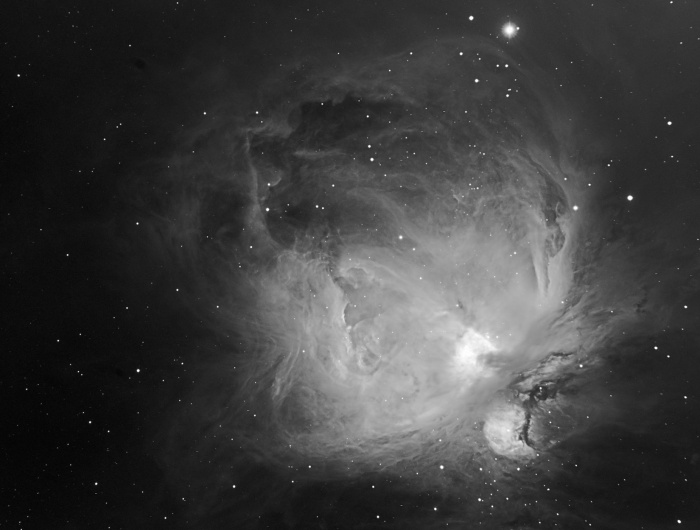It’s amazing what you can do in bright Moonlight! Last night was one day past the full Moon and the sky was flooded with light. Hopeless for imaging faint Deep Sky Objects or DSOs you may think.
But using narrowband filters such as H-Alpha wonders can be performed! I imaged that old Winter favourite The Great Orion Nebula, or M42. I took exposures of 15 minutes over more than 3 hours, and the following image is the result. Because the core of M42 is so bright (relatively speaking!) I took a series of short, 15 second exposures and blended that into the core region of the main image.
Another advantage of using narrowband filters is that the detail is always very sharp. This is because the band of frequencies of light is very narrow (in this case about 9nm), and the focus is sharper than a full white-light image due to the precise focus you can achieve at these specific wavelengths.
For interested readers, the telescope used here was my new 130mm Triplet APO refractor, operating at F/7. The CCD camera was my ATIK 383L and a 2″ Baader Ha filter. Off-axis autoguiding using an SX OAG unit and SX LodeStar CCD.
